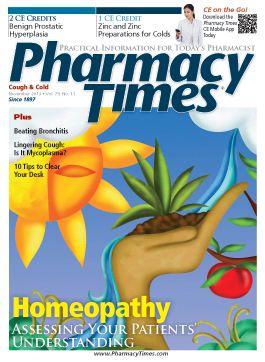Publication
Article
Pharmacy Times
Incidence of Adverse Drug Interactions
One of the most problematic things about drug"drug interactions is that we seldom have data on how often a particular interacting drug pair causes adverse consequences.


One of the most problematic things about drug—drug interactions is that we seldom have data on how often a particular interacting drug pair causes adverse consequences. Because of this lack of data, those of us who categorize drug–drug interactions into levels of importance must frequently rely on educated guesses. It also means that practicing pharmacists are often forced to make decisions on whether to act on a particular drug–drug interaction without knowing the likelihood that the patient in question will have an adverse outcome.
Why Are There So Little Data?
Most of the published studies on drug—drug interactions are either case reports or pharmacokinetic studies in healthy subjects, neither of which gives credible data on the incidence of adverse outcomes. A good example is the interaction between clarithromycin and colchicine. We have pharmacokinetic studies in healthy subjects showing several-fold increases in colchicine plasma concentrations (but with marked variability between subjects). We also have numerous well-documented case reports of the interaction, many of them resulting in fatal bone marrow suppression. So we know this is a dangerous interaction, and we cannot imagine a situation in which the benefit of using the combination would outweigh the risk.
So in this case we have enough data to rationally manage the interaction, notwithstanding our inability to determine the general incidence of adverse consequences. With drug interactions, as with many other clinical decisions, we must decide whether to act long before we have definitive scientific data.
Epidemiologic Studies
Probably fewer than 1% of all published reports on drug—drug interactions are epidemiologic studies, but they are beginning to provide useful information. For example, in case-control studies, Juurlink et al found that patients on angiotensin-converting enzyme (ACE) inhibitors who were hospitalized for hyperkalemia were 20 times more likely to also be taking a potassium-sparing diuretic. They also found that patients on digoxin who were hospitalized with digoxin toxicosis were 12 times more likely to be on clarithromycin, and patients on glyburide who were hospitalized for hypoglycemia were 6 times more likely to be on cotrimoxazole.1
Case series can also be helpful. For example, in a study of 116 patients given colchicine and clarithromycin, fatal colchicine toxicosis appeared in almost 20% of people when the 2 drugs overlapped by 3 days or more, but the fatality rate was only about 3% when the overlap was 1 or 2 days.2 This information is valuable in making a decision about this interaction in a particular patient, but it does not provide incidence data for the population as a whole. If they are well designed, epidemiologic and case series studies tend to be better than pharmacokinetic studies or case reports for estimating the risk of a particular drug—drug interaction.
Mitigating and Risk Factors
When assessing the risk of a drug—drug interaction in a particular patient, it is essential to consider factors that may reduce or eliminate the risk in the patient (ie, mitigating factors) as well as factors that may place the patient at greater risk of an adverse outcome (ie, risk factors). The good news is that we do know mitigating and risk factors for some interactions: patients with renal impairment and diabetes appear more likely to manifest hyperkalemia when given ACE inhibitors and potassium-sparing diuretics, and patients taking large doses of simvastatin are more likely to develop myopathy if a CYP3A4 inhibitor is added. On the other hand, patients on antihypertensive medications are unlikely to manifest clinically important increases in blood pressure if a nonsteroidal anti-inflammatory is only given for a few days. So even though overall incidence data are sparse, we can often place patients in increased or reduced risk categories based on mitigating and risk factors.
Summary
Lack of incidence data for drug—drug interactions complicates the assessment of their clinical importance in general and in specific patients. Pharmacists need to be provided not only estimates of incidence (when possible), but more importantly, mitigating factors and risk factors so they can make patient-specific risk assessments.
Drs. Horn and Hansten are both professors of pharmacy at the University of Washington School of Pharmacy. For an electronic version of this article, including references, if any, visit www.hanstenandhorn.com.
References
- Juurlink DN, Mamdani M, Kopp A, Laupacis A, Redelmeier DA. Drug-drug interactions among elderly patients hospitalized for drug toxicity. JAMA. 2003;289:1652-1658.
- Hung IF, Wu AK, Cheng VC, et al. Fatal interaction between clarithromycin and colchicine in patients with renal insufficiency: a retrospective study. Clin Infect Dis. 2005;41:291-300.







